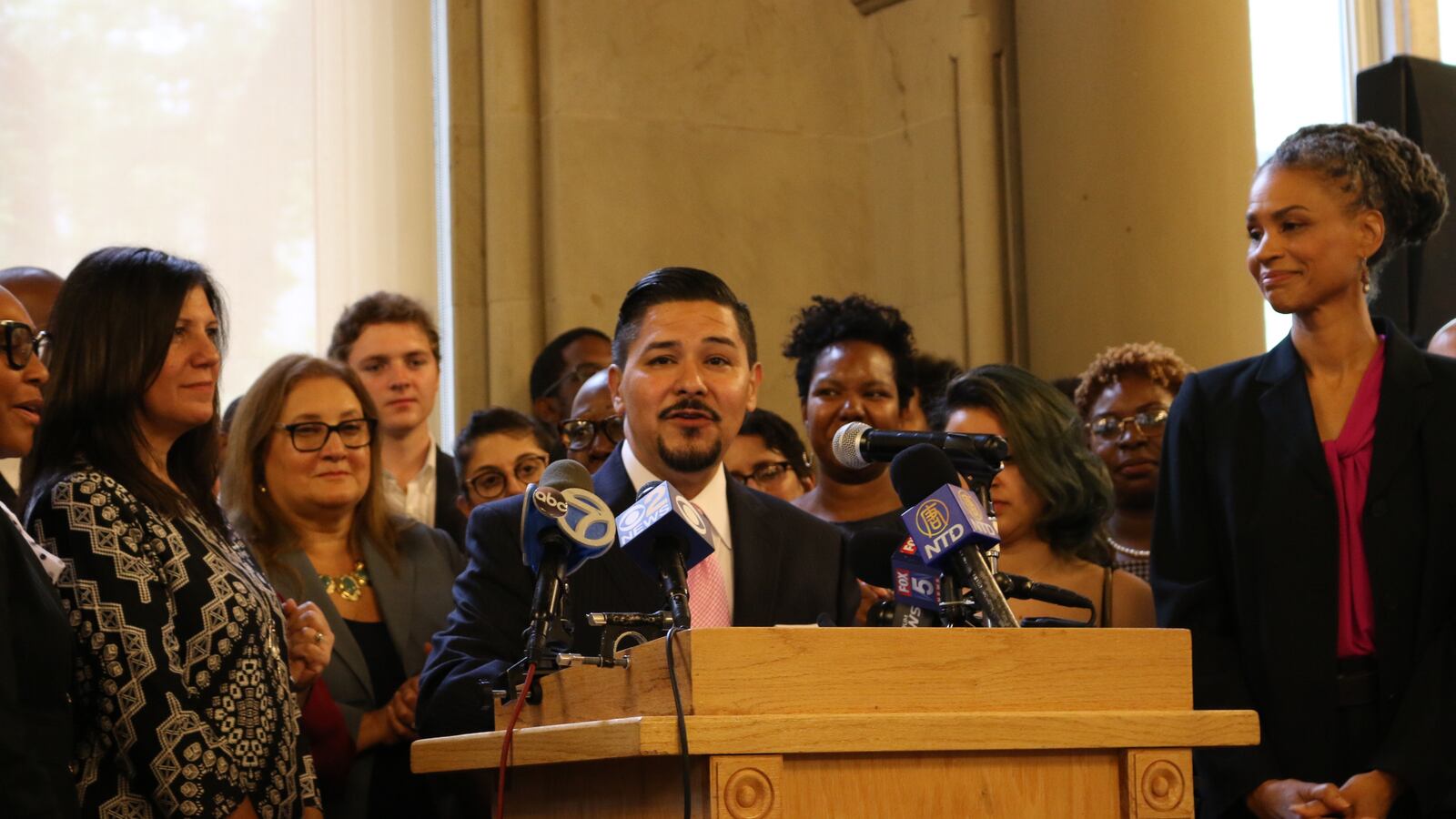Mayor Bill de Blasio endorsed a series of recommendations offered by the city’s School Diversity Advisory Group, an announcement that top city officials — and even some integration advocates — heralded as a triumph.
“Today’s a big deal,” Chancellor Richard Carranza said, noting the city had accepted virtually all of the advisory group’s 67 recommendations. It “represents the systemic change that we’ve been yearning for,” said Mark Treyger, chairman of City Council’s education committee.
But despite the soaring rhetoric, the suggestions the city has pledged to adopt don’t come with precise integration goals, changes to any enrollment policies, or a timeline for seeing results.
The initial recommendations made by the advisory group, released in February, did not address some of the most explosive issues — including gifted and talented programs or academic screening — that advocates say are essential in addressing segregation. The education department’s latest announcement sidesteps those issues, too.
Instead, the city has pledged to push schools to be more representative of their surrounding districts and boroughs — with the goal for schools to eventually match citywide demographics. That is a more aggressive target than the city’s previous diversity goals, which experts said were extraordinarily modest. Officials also announced Monday that five additional districts would receive $200,000 each in grant funding to begin the process of crafting hyper-local integration plans.
Some school integration advocates who were part of the diversity advisory group said those efforts represent an important milestone.
“This is more policy that’s been implemented than anywhere in the country I’ve seen voluntarily,” said Matt Gonzales, who supports school integration work through the nonprofit New York Appleseed. “This is a critical step.”
Monday’s announcement, which de Blasio previewed in an op-ed, is notable partly because the mayor has been reluctant to discuss integration for most of his time in office, even though the city’s schools are among the most segregated in the country.
Though the mayor introduced a proposal to integrate eight specialized high schools last year, which requires approval from state lawmakers, some advocates argue the mayor hasn’t done enough to address segregation in the vast majority of schools whose enrollment processes he directly controls.
Last week, hundreds of students gathered on the steps of the education department’s headquarters to demand a more integrated schools system, chanting “where’s our mayor?” The rally was timed for the two year anniversary of the mayor convening the diversity task force. De Blasio, who is running for president, did not attend Monday’s press conference and has less than three years left in his second, final term.
Tiffani Torres, student integration activist with the group Teens Take Charge and an organizer of last week’s rally, said she was disappointed that the education department did not explain in detail how the city hopes to boost integration, especially among the city’s high schools.
“The proposals are a step in the right direction, but they don’t match the urgency of the crisis of segregation in our schools,” said Torres, a student at Manhattan’s Pace High School who has pressed the mayor on school segregation.
Some members of the diversity task force understand the impatience for change but are also hopeful more is coming. Lazar Treschan, youth policy expert at the Community Service Society, said accepting the initial recommendations “lay the groundwork” for broader policy changes even if it isn’t yet enough.
“This administration will only be successful in integrating schools that dismantle some of the mechanisms that are the greatest barriers to integration — like gifted and talented, middle school screening, and high school screening — which aren’t in today’s announcement,” Treschan said.
Members of the advisory group said its second and final report would address academic screening and gifted programs, though they declined to say what changes are under consideration. That report is expected in a few weeks.
The announcement Monday included five new districts that will receive grants to kick off a process of creating district-specific integration policies. They are: Bronx District 9, Districts 13 and 16 in Brooklyn, District 28 in Queens and Staten Island’s district 31. Districts in Manhattan and Brooklyn have used that process to change zoning lines or eliminate academic screens.
Many of the 62 recommendations the education department accepted with some tweaks address issues such as training teachers in culturally responsive education and requiring schools to work to eliminate racial disparities in suspensions.
Some on the advisory group see such efforts as critical follow-ups to any desegregation plan — to ensure that “once students from different backgrounds are in a school together that all students are honored and may feel welcome,” said Richard Kahlenberg, another member of the committee, and a researcher at the progressive think tank The Century Foundation. But the extent to which the city will be able — or willing — to change student demographics at individual schools is unclear.
The education department rejected two of the diversity group’s initial recommendations, including hiring a “chief integration officer” and looking into transferring oversight of school safety officers from the police department to the education department.
Officials said they are “continuing to review” a few other suggestions, such as making more grant money available to districts to spur integration efforts and adding enrichment programs to elementary schools.

